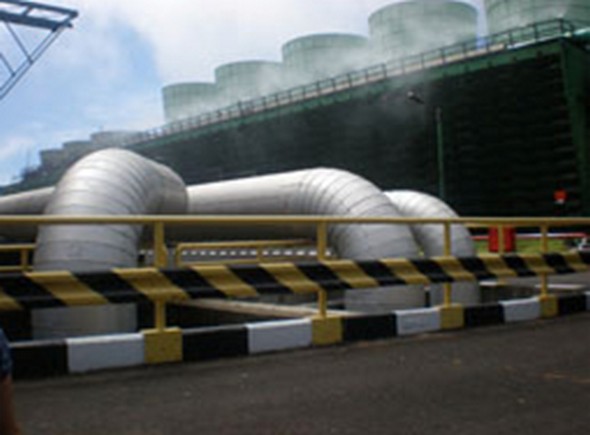Indonesia is rich in renewable energy but government policies foster reliance on fossil fuels
Fitrian Ardiansyah
Indonesia is Southeast Asia’s largest energy producer and consumer. Its reliance on dirty and subsidised fossil fuels means it has made little progress in terms of renewable energy. Yet Indonesia has enormous renewable energy potential. Energy sources such as geothermal power could readily meet up to 40 per cent of the country’s energy needs.
Unless reversed, Indonesia’s current trends of expanding coal-fired power plants in order to respond to energy shortages and of heavily subsidising dirty energy will see the country fall radically short of its 2025 renewable energy targets. These trends will also continue to drain the country’s financial resources and deplete government budgets.
But switching to renewable energy won’t be easy. Removing fuel subsidies is a sensitive political issue. Promoting renewable energy requires structural adjustment and high levels of initial investment. Yet these are the conundrums which need to be urgently resolved if Indonesia wants to secure its energy, develop its economy and tackle climate change.
Increasing energy demand
Who would have thought that such a resource rich country would one day have difficulties securing and providing basic energy to its citizens? Indonesia has a plentiful supply of accessible energy sources, both from fossil fuels and renewables, and is the largest energy producer in Southeast Asia. Yet the country is struggling to keep up with its own energy demands.
Historical data from the Ministry of Energy and Mineral Resources show that energy demand has been increasing faster than economic development and population growth. According to the Green Policy Paper released by the Finance Ministry, total energy demand is growing by around seven per cent per year, as the transport and industrial sectors grow, and as households become more affluent.
A large proportion of this demand has been met by polluting fossil fuels, mainly oil. A consequence of this skyrocketing demand is that since 2004 Indonesia had become a net-importer of both crude oil and refined products.
With a production capacity of half a billion barrels per year and increasingly limited oil reserves, it is estimated that Indonesia’s remaining 10 billion barrels of oil reserves will be exhausted in less than 20 years. If no new reserves are found, with the increasing demand for energy and a ‘business as usual’ approach, Indonesia will be a significant oil importing country in less than two decades. Already, dramatic increases in average global oil prices have hit Indonesia’s purse strings.
Electricity shortages
More than 70-80 million people, or almost one third of Indonesia’s 225 million inhabitants, lack access to electricity. These people mostly live in rural areas and the outer islands. In 2004 for instance, 90 per cent of rural households had no electricity compared to only 16 per cent in urban areas, and the electrification ratio in Papua and Nusa Tenggara was only 20-30 per cent.
Most power generation today is from conventional thermal sources including fossil fuels such as oil, coal and natural gas. Less than 20 per cent comes from hydroelectric, geothermal and other renewable sources. Hence, the high price of oil on the global market has not only made it more expensive to produce and import gasoline, but has also led to increasing electricity-generation costs.
Electricity is heavily subsidised and currently customers pay for electricity at far below market price. The state owned electricity company PLN, however, is required to buy energy at the market price – as stipulated in Presidential Decree number 55 of 2005 – and it struggles to do so. Fuel is also heavily subsidised by the government. Together, fuel and electricity subsidies have created a massive burden on the state budget. Their estimated cost to the government in 2010 is US$9.78 billion, and in 2011 had already hit US$3.68 billion by March.
Reliance on subsidies
The subsidies have various perverse economic implications. In 2008 the Coordinating Ministry for Economic Affairs admitted that indiscriminate fuel subsidies have been a poor way to pursue welfare transfers from rich to poor, because the wealthiest 40 per cent of households capture 70 per cent of the subsidies. Moreover, and very relevant to the issue of climate change, subsidies lead to overconsumption of energy because the actual cost of that energy is not reflected in the price that consumers pay. Many reports suggest that subsidies discourage energy efficiency measures and the development of alternative or renewable energy sources by way of low electricity tariffs.
Adjusting prices and removing subsidies could promote better energy efficiency and conservation. There is plenty of room for improvement. Some studies show that Indonesia could relatively painlessly achieve increased energy efficiency, by as much as 10-30 per cent in households, 10-23 per cent in the commercial sector and 7-21 per cent in industry. In 2009 Agus Purnomo the special advisor to the president on climate change stated that cutting subsidies on fossil fuels would bolster the competitiveness of renewable energy sources. The logic is that the money previously used for subsidies could be utilised to help seed investment in renewable energy development, reaching the country’s sustainable energy growth path.
However, eliminating fuel subsidies has never been an easy task. Many ordinary Indonesians hate the idea of paying more for fuel, electricity and related services. Throughout the past ten years, the government has had some success at whittling away at these subsidies but the issue remains politically contentious. The parliament in particular is reluctant to take action.
Renewables: potentials and challenges
As well as taking action on the demand side, the government could take action on the supply side by providing more support for renewable energy. Indonesia possesses a variety of renewable energy resources, including geothermal, solar, micro-hydro, wind and bio-energy. Indeed, Indonesia has more geothermal energy potential than any other country. Most estimates put the potential reserves at 28,000 megawatts, which could meet some 40 per cent of national electricity demand. Yet currently Indonesia only uses 4.2 per cent of that potential.
The central government’s general energy policy advocates diversification of energy sources and conversion from coal and petroleum-based fuels to renewable energy sources, with the overall goal being to reduce emissions. Nonetheless, promotion of renewable resource development over the last five years has progressed very slowly. At present renewable energy production (hydropower, geothermal and biomass) makes use of only 3.4 percent of total potential reserves. This low figure is partly because shifting the country’s energy portfolio to renewables would require massive investment.
 |
|
Indonesia needs more geothermal plans / WWF-Indonesia |
Another obstacle is Indonesia’s very system of government. Not only is the bureaucracy lacking in capacity and resources, and riddled by inter-departmental tension, at the national level. But the decentralised system of government, and the resulting division of power between central and local governments also impedes national coordination in delivering a policy of transition to renewable energy. Under decentralisation, local governments have been given the rights and responsibility to issue concessions and licenses for renewable energy. However, most local governments have very limited capacity or understanding of the implications of various energy scenarios. There is no established policy framework through which to encourage local governments to pursue renewable energy initiatives.
Between a rock and a hard place
Currently, Indonesia’s total power generation capacity is 21 gigawatts, but the actual rated capacity is just 18 gigawatts, two-thirds of which is concentrated in Java, Madura and Bali. Electricity demand grows by 9 per cent per year on average, hence the current capacity is no longer sufficient. The pressure to meet the energy shortfall is immediate and pressing, and a cause of discontent both to those who are beyond the reach of the existing grid, and those who are part of it but increasingly subject to black outs.
The government faces dilemmas in working out how to meet the expectations of these groups. Continuing the use of subsidised oil will cost the country’s economy. Increasing the use of coal – the current policy envisages the construction of coal-fired power plants with a total capacity of 10,000 megawatts – will meet demand in the short term but it does not provide a long term solution since the plants are mostly inefficient. Coal-fired plants also contradict Indonesia’s commitment to tackling climate change, and also produce other environmental harm, such as smog and acid rain.
On the other hand, despite the potential of renewable energy in Indonesia, the preference for coal and previously oil have seen this sector grow only sluggishly. Successful renewable energy development would address escalating concerns over environmental issues and reduces dependency on conventional energy resources. However, to get there, significant investment and serious governance reforms are needed.
This is ripe for Indonesia to make tough but right decisions about its future energy needs. The Indonesian government needs to stiffen its political resolve to phase out subsidies for fossil fuels. Actions to reform policy incoherence, remove structural impediments and promote investments in renewable energy are also needed. Mixing various sources of funds from the private sector and international funding institutions, and encouraging investments with pricing and tax reforms could promote investment in renewable energy. Strong leadership and clear guidance from the top, notably from the president and his cabinet is needed.
Fitrian Ardiansyah (fitrian.ardiansyah@anu.edu.au) is a PhD candidate at the Australian National University, and was formerly program director for climate and energy at WWF-Indonesia.












